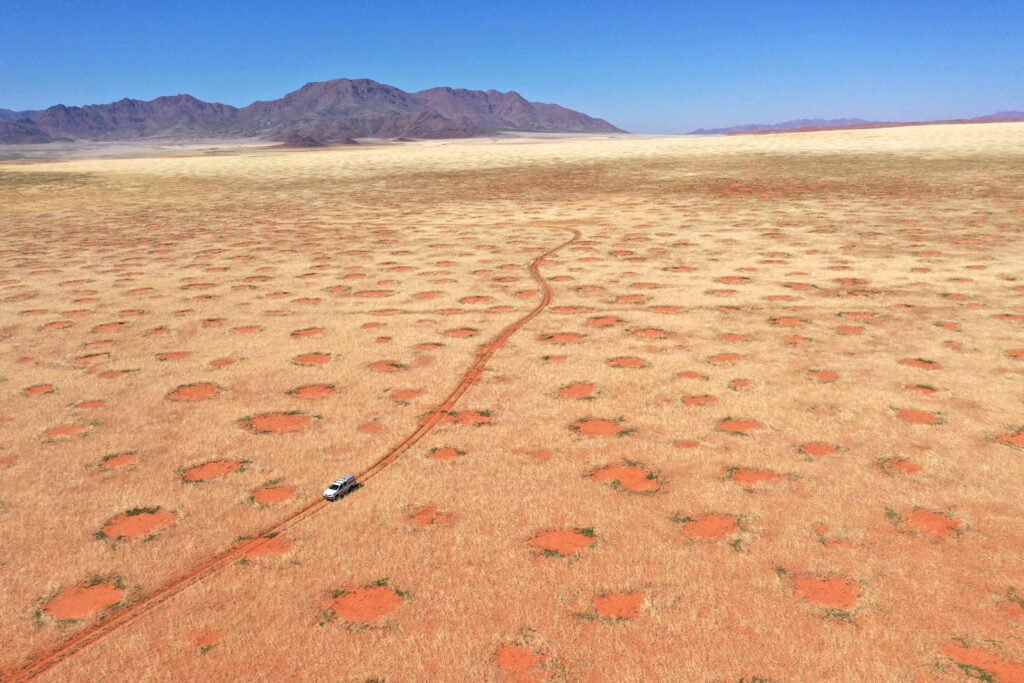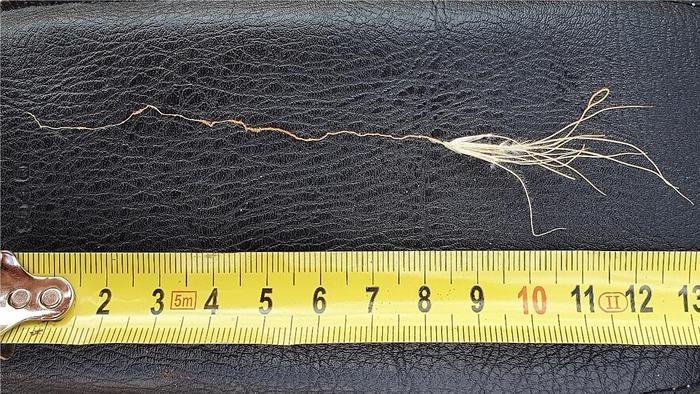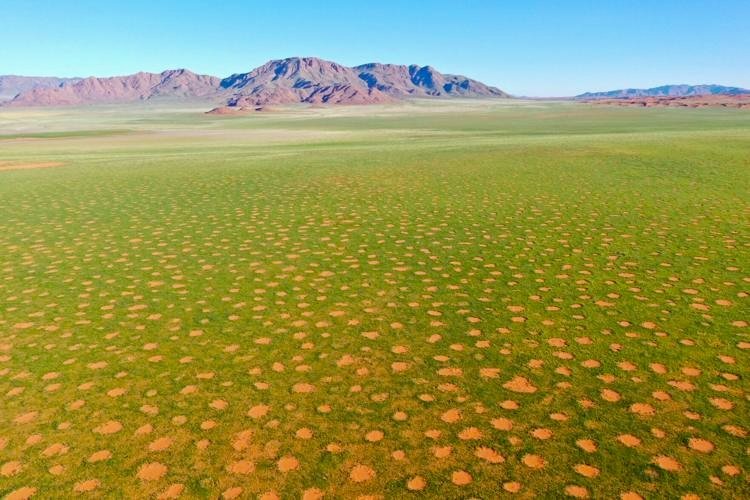For centuries, the grassy plains of the Namib Desert have been dotted with mysterious barren rings known as “fairy circles.” Local folklore warned that these strange patterns were the footprints of the gods, or a sign of a subterranean dragon poisoning the earth above.
However, modern science has a different explanation for these enigmatic bare patches; one that has sparked heated debate among researchers.
A new study published in the journal Perspectives in Plant Ecology, Evolution and Systematics presents compelling evidence against the long-standing “termite hypothesis” that has dominated discussions around fairy circle origins. This hypothesis, championed by biologist Norbert Jürgens, proposed that the circles form when subterranean termites consume the roots of newly sprouted grasses, creating distinctive circular patches in the dry grasslands on the edge of the Namib Desert.


However, an international team led by researchers Stephan Getzin and Hezi Yizhaq offers a systematic rebuttal, drawing from extensive fieldwork and analysis across multiple regions of the Namib Desert over several years, which led to intriguing findings.
Jürgens and his team had previously cited various studies as proof that termites of the species Psammotermes allocerus were the culprits behind fairy circle formation. But Getzin’s team wasn’t convinced by the evidence.
“Our review shows that there is no single study to date that has demonstrated with systematic field evidence that the green germinating grasses within the fairy circles would be killed by root herbivory of sand termites,” states the new paper.
Getzin and Yizhaq excavated and measured around 500 grass individuals across southern, central and northern Namib sites from 2020-2022. Crucially, the roots of dead grasses inside fairy circles were undamaged and often longer than those of living grasses outside the circles.
“If termite herbivory were the cause, the roots of the dying grasses should be shorter… and show signs of biomass consumption,” the authors write in the paper. Oddly, the roots were as long, and some significantly longer, which tells the researchers that something else killed those plants, not termites.
So what is behind the fairy circles?
The researchers point to an alternative “self-organization” hypothesis where the grasses essentially create their own downfall through competition for scarce water resources. The plants, in simple terms, organize.
Using continuous soil moisture monitoring, the team found that the uppermost 10cm topsoil layer inside fairy circles dries out rapidly after rainfall, while deeper soil layers retain more moisture. The young grass seedlings, with roots only 10cm long, cannot reach this deeper water reservoir and quickly desiccate, while the thriving grass on the exterior of the fairy circle enjoys a feeding frenzy.
“With their well-developed root system, these clumps of grass soak up the water particularly well. After the rain, they have a huge competitive advantage over the freshly germinated grasses in the fairy circle. The new grass only loses a small amount of water via transpiration from its small leaves, resulting in insufficient ‘suction power’ to pull new water from deeper soil layers,” Dr. Stephan Getzin said in a statement.
To bolster their case, the researchers employed a multi-pronged approach combining extensive field data, soil analyses, and statistical testing across multiple sites and rainfall events from 2020-2024.
Soil moisture measurements at depths of 12cm and 20cm revealed the fairy circle topsoil was significantly drier than the surrounding matrix vegetation during the critical post-rainfall period when grasses germinate. Root excavations showed dying seedlings had undamaged but longer roots than healthy matrix grasses, indicating failed efforts to reach moisture rather than termite damage. In simple terms, those new baby grasses tried hard to reach the water in the soil, but they just couldn’t compete.


The larger and stronger grasses that live outside the fairy circles soak up the water faster, utilizing the fairy circle as a sort of “death zone.” According to the study, this is purposeful.
“This self-organization can be described as ‘swarm intelligence’. It is a systematic adaptation to a lack of resources in arid regions,” say Getzin and his colleague Dr Hezi Yizhaq.
The grasses along the edge of the fairy circles, with their larger size and competitive advantage, actively create and maintain these unvegetated gaps through their strong water uptake, sacrificing their newly germinated brethren to a dry death.
While termites likely consume dead grass matter after seedlings perish, the researchers argue the initial desiccation, not herbivory, sparks fairy circle formation in this arid ecosystem.
As the debate continues, this latest study highlights how rigorously testing hypotheses against multi-year field data can separate fanciful folklore from ecological reality. The fairy circles’ real origins, though less whimsical than the footprints of the gods, reveal a harsh survival strategy written in radial patterns across a desert.
For more, please visit Stephan Getzin’s research website on this phenomenon.
MJ Banias is a journalist who covers security and technology. You can find his work here. He co-hosts The Debrief Weekly Report. and you can email MJ at mj@thedebrief.org or follow him on Twitter @mjbanias.

